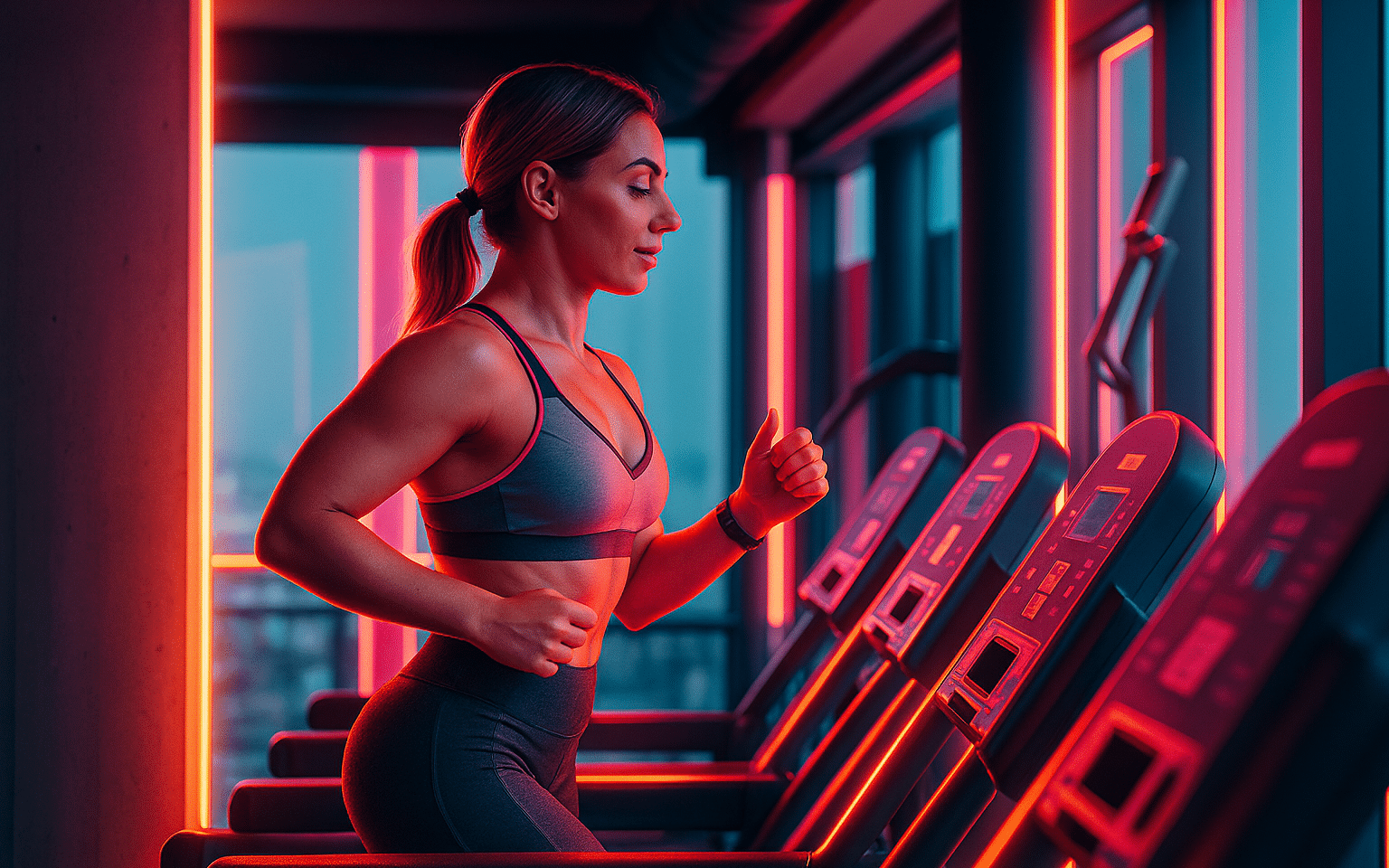
Jump to a section:
At Emulent, we’ve collaborated with various sport and fitness brands—ranging from startups producing niche workout gear to established manufacturers of home fitness equipment. Whether you specialize in cardio machines, strength-training essentials, or innovative recovery tools, standing out in a market driven by active lifestyles and quick product turnover can be challenging. A strong marketing blueprint is essential for reaching fitness enthusiasts, gym owners, coaches, and everyday consumers seeking to up their wellness game.
1. Define Your Brand Identity and Purpose
While many brands produce fitness gear, yours can stand out through a unique story—like specialized materials, advanced design, or a commitment to community health. Laying out a clear brand identity ensures a cohesive presence across all marketing channels:
- Spotlight Your USP (Unique Selling Proposition): Perhaps your equipment uses eco-friendly materials, or you integrate cutting-edge biomechanics. Clarify how this sets you apart—does it reduce injury risk, improve durability, or incorporate athlete feedback?
- Design a Distinctive Visual Style: A color palette, logo design, and imagery that evokes energy, resilience, or performance resonates with fitness-minded audiences. Keep these elements consistent, from packaging to social media graphics.
- Reflect Target User Values: If your brand is about empowering everyday people to get fit at home, weave motivational language and success stories into your messaging. If you cater to elite athletes, emphasize advanced performance benefits.
Key Takeaway: A cohesive, well-defined identity keeps your brand memorable. Show that your product isn’t just gear—it’s part of a broader lifestyle that resonates with people actively pursuing health and fitness goals.
2. Capture Each Customer Segment with Tailored Messages
The fitness market includes diverse buyer personas—like gym operators, personal trainers, home workout enthusiasts, sports teams, and rehab centers. Differentiate your outreach to match each segment’s specific priorities:
- Gym & Studio Owners: Emphasize commercial-grade durability, equipment warranties, and easy service or repairs. Discuss ROI benefits—like how your machines attract new gym memberships or reduce downtime.
- Personal Trainers & Coaches: Highlight portability, user-friendly design, or advanced metrics (like integrated performance tracking). Provide educational content showing how your product supports progressive training plans.
- Home Fitness Consumers: Focus on convenience, space-saving features, or streaming workout classes accessible through your gear. Show how busy professionals or parents can maintain routines from home, no gym commute required.
Key Takeaway: Craft marketing materials—ads, landing pages, social posts—geared specifically to each group. By addressing their core pain points, you maximize resonance and conversions.
3. Engage in Compelling, Multi-Channel Content Marketing
Educational & Motivational Materials
While sleek product photos excite potential customers, offering in-depth knowledge fosters trust and usage confidence:
- Exercise Libraries & How-To Guides: Provide step-by-step routines or short demo videos for each piece of equipment. Break down correct form, recommended reps, and safety tips.
- Blog Posts on Fitness Trends & Techniques: Write about the latest strength training methods, functional movements, or at-home workout schedules. Link these posts to your product pages where relevant.
- Product Bundles with Programs: If feasible, bundle your gear with curated workout plans or meal-planning suggestions—enhancing perceived value and delivering a full solution.
Key Takeaway: Going beyond simple product specs by demonstrating you’re a resource for knowledge, training strategies, and motivation can differentiate your brand from purely transactional competitors.
Social Media Showcases & Influencer Partnerships
- Visual Platforms (Instagram, TikTok): Post short workout clips, transformations, or user-generated content showing real people using your equipment. Engaging visuals can captivate both casual and serious fitness consumers.
- Influencer Collaborations: Fitness coaches, popular YouTubers, or local gym personalities can demonstrate your equipment in real workout scenarios. Their endorsements often spark curiosity among their followers.
- Community Challenges or Hashtags: Encourage customers to share progress photos or short workout wins using a unique hashtag. Reward the best posts with small freebies or a spotlight on your brand feed.
Key Takeaway: Foster a social media presence that merges professional guidance with user involvement, turning each satisfied client into a potential brand ambassador.
4. Optimize Your E-commerce and Distribution Channels
Streamlined Online Store or Product Listings
Whether you sell directly via your website or partner with e-commerce giants (like Amazon), clarity and convenience are crucial:
- Concise Product Descriptions & Videos: Outline core features, benefits, usage suggestions, and any unique selling points (like patented design). For big-ticket items, include a short demonstration or assembly video.
- Emphasize Specs & Compatibility: If your equipment integrates with fitness apps or wearables, mention it. List weight capacity, recommended user level, warranty coverage, and shipping details up front.
- Reviews & Ratings: Encourage verified purchasers to share feedback on durability, comfort, or results. Social proof can significantly reduce buyer hesitation—especially for pricer gear.
Partner with Retailers & Physical Showrooms
Some consumers want to test equipment before investing. If possible:
- Collaborate with Specialty Fitness Stores: Let them demo your machines or carry your brand, offering in-person experiences that your purely online channels can’t match.
- Pop-Up Events & Trade Shows: Appear at local or industry-specific fitness expos. Provide hands-on trials, short live workouts, or Q&A sessions. This tactile approach fosters direct customer and influencer interactions.
Key Takeaway: A frictionless purchasing process—backed by transparent details, strong user feedback, and if possible, real-life demos—can significantly boost buyer confidence in your fitness equipment offerings.
5. Encourage Ongoing User Engagement and Loyalty
Repeat sales (e.g., upgraded machines or complementary accessories) and continuous brand advocacy hinge on consistent engagement:
- Loyalty or Referral Programs: Offer points or discounts for additional purchases (like different resistance bands or advanced attachments). Reward clients who refer friends or family with free gear add-ons, spurring word-of-mouth expansions.
- Ongoing Educational Webinars: Feature short monthly sessions on workout routines for each product category. This reaffirms your brand’s commitment to user success and fosters loyal, informed customers.
- Branded Challenges & Awards: Host a “30-Day Strength Challenge” or “New Year Fitness Goal” drive on social media or your newsletter. Recognize participants’ progress, fueling a sense of community around your brand.
Key Takeaway: By offering consistent follow-up resources, community challenges, and loyalty perks, you elevate your brand beyond a single purchase—shaping a sustained relationship where customers remain motivated to use (and recommend) your equipment.
Conclusion: Building a Thriving Fitness Equipment Brand Through Strategic Marketing
From forging a clear identity that highlights your gear’s benefits to sustaining user engagement post-purchase, effective marketing is the backbone for any sport and fitness equipment company looking to differentiate in a crowded field. By aligning messaging with consumer values—like health, authenticity, innovation—and backing it with practical resources, you encourage not only initial interest but lasting loyalty.
If you want specialized assistance crafting such a holistic plan—covering branding, content strategy, influencer tie-ins, and loyalty campaigns—contact Emulent. We’re here to help you structure your marketing playbook, championing your sport and fitness equipment as the perfect catalysts for healthier, more active living.

